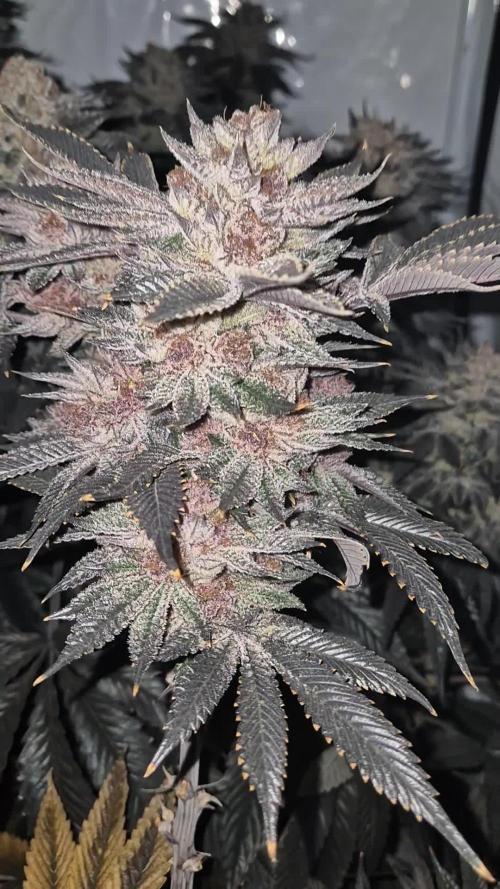The Grow Awards 2026 🏆 































Likes
Comments
Share


@Sators
Follow
Day 36. topping for seven branches.
Day 38. Water with 2L nutrients mix.
Day 39. does super cropping for four brunches.
Day 40. Switch to 12/12h
Likes
23
Share


@adam_pawloski87
Follow
This week went real great , one has been getting flushed and the rest we will start flush Tomorrow! These ladies are doin so amazing! Hope you all enjoy !! Stay tuned for next week! Cheers an happy holidays!
Likes
62
Share


@Roberts
Follow
Do-Si-dos auto is doing good. It looks like she is switching over to do some bulking soon. I started adding pk to the solution a few days ago. Everything is looking great at the moment. Thank you Zamnesia seeds, Athena, and Medic Grow. 🤜🏻🤛🏻🌱🌱🌱
Thank you grow diaries community for the 👇likes👇, follows, comments, and subscriptions on my YouTube channel👇.
❄️🌱🍻 Happy Growing 🌱🌱🌱
https://youtube.com/channel/UCAhN7yRzWLpcaRHhMIQ7X4g
Processing
Likes
9
Share


@VIPgrower
Follow
Ok all caught up to same gorge as laughing budda I did to separate diary I guess jay tto show they are different but grew well together so far now it should become interesting when turn to flower at end of week
Likes
Comments
Share


@MasterGrowda88
Follow
I've owned this wonderful red lady for about six years. She was my first plant imported from the States, and to this day, she's one of the best genetics I have here. Very robust, can withstand anything, likes to be trained, and the smell is very strong even before flowering.
Likes
5
Share


@Mo_Powers
Follow
it's very changeable weather again in germany. so far she's coping quite well. i've started to make a funny LST. I wonder what will come out of it ? :)
Processing
Likes
12
Share


@Marijuanaisland
Follow
Está semana as cores estão mais vivas e o cheiro está forte ualll Red Hot com cheiro floral bastante tricômas, a sweet zkitllez cheiro de frutas tropicais intenso e doce adoro sweet seeds está de parabéns lol
Likes
2
Share


@Enki_Weed
Follow
Dienstag war ein großer Tag für meine Pflanze – sie ist jetzt offiziell im Blüte-Modus! Das bedeutet eine Umstellung auf den 12 Stunden Licht- und 12 Stunden Dunkelheit-Rhythmus. Kurz davor habe ich sie noch entlaubt, um sie auf diese wichtige Phase vorzubereiten.
Auch die Wasserzufuhr habe ich angepasst, sie entspricht jetzt den Empfehlungen für die zweite Blütewoche. Zum Glück ist das Problem mit dem pH-Wert endlich Vergangenheit. Das hat mir wirklich Kopfzerbrechen bereitet, aber jetzt scheint alles stabil zu sein.
Das aktuelle Sorgenkind ist allerdings die Luftfeuchtigkeit. Sie ist momentan leider viel zu hoch, und ich muss mir überlegen, wie ich das am besten in den Griff bekomme. Das ist jetzt meine nächste große Herausforderung.
Likes
19
Share


@Mazgoth
Follow
The plant is eating well and I’m giving more bio heaven,I used only twice the acti-Vera,Alg-A-Mic.
Likes
1
Share


@dm4ccy
Follow
Upped amount I was watering due to complaints from a friends but reducing how frequently it gets waters leaving it for 2/3 days rather as every 24h nonetheless growth is looking great
Likes
29
Share


@CanadianFillmore
Follow
Week 3 flowering begins! Added B52 to the nute mix this week. LSD is looking healthy and she stretched a little the last week.
Thanks for stopping by 👽🌳💚
Likes
37
Share


@Ferenc
Follow
Last couple of days... No watering from today, (Day 129) and the light will be switched off as well from tomorrow (Day 130) so I will harvest them
approx on Day 132
or 133 on the 18th week :)
Likes
24
Share


@Canaryweed_tf
Follow
Hola, que tal? Ya tenemos aquí la cuarta semana de floración de esta maravillosa Purple Kush de nuestros socios de Kannabiaseeds. Ya tenemos la cuarta semana de flora y la planta esta floreciendo muy bien esperemos que siga así. ahora le empezaremos a echar un fertilizante casero con bastante azúcar para que engorde bien esas flores 😍
Likes
4
Share


@xTaps
Follow
25.06
FD50
Nutrients:
14ml Biocanna Flores
2ml Biocanna Rhizotonic
10ml Bio Boost
29.06
FD54
Nutrients:
12ml Bio Boost
Likes
17
Share


@JonnyKush
Follow
hello growmies! day 51 finally the pre-flowers begin to appear. I apologize for the few photos but unfortunately they really filled the box and I find it difficult. overall I have to say they look in perfect shape! I will keep you updated thanks for passing by. like and comment! good day and beautiful growth to you 🌳🌱
Likes
3
Share


@macrocefalo
Follow
We arrived in the third week the plants show good vigor and growth. Some cold days 17 Cº may have prevented further growth but we do not have to complain the plants demonstrate to be enjoying food and light. On the 15th the plants presented slightly wilted leaves as day 16 was the day of watering I imagined it was thirsty. But day 16 a few hours after watering the plant still had the same symptoms so I realized that the LED screen was 53 cm from the plant. I increased the distance to 65cm and the plant returned to normal both in force and I managed to correct the diagnosis. I am managing to apprehend some things finally putting into practice.
























